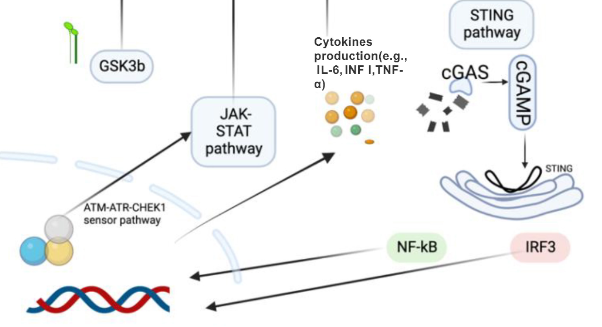Advances in nanotechnology-enabled drug delivery for combining PARP inhibitors and immunotherapy in advanced ovarian cancer
DOI:
https://doi.org/10.17305/bb.2023.9757Keywords:
Ovarian carcinomas, combination therapy, PARP inhibitors, immune checkpoint inhibitors, nanomedicineAbstract
Advanced ovarian cancer is a malignancy that spreads beyond the ovaries to the pelvis, abdomen, lungs, or lymph nodes. Effective treatment options are available to improve survival rates in patients with advanced ovarian cancer. These include radiation, surgery, chemotherapy, immunotherapy, and targeted therapy. Drug resistance, however, remains a significant challenge in pharmacotherapeutic interventions, leading to reduced efficacy and unfavorable patient outcomes. Combination therapy, which involves using multiple drugs with different mechanisms of action at their optimal dose, is a promising approach to circumvent this challenge and it involves using multiple drugs with different mechanisms of action at their optimal dose. In recent years, nanotechnology has emerged as a valuable alternative for enhancing drug delivery precision and minimize toxicity. Nanoparticles can deliver drugs to specific cancer cells, resulting in higher drug concentrations at the tumor site, and reducing overall drug toxicity. Nanotechnology-based drug delivery systems have the potential to improve the therapeutic effects of anti-cancer drugs, reduce drug resistance, and improve outcomes for patients with advanced ovarian cancer. This literature review aims to examine the current understanding of combining poly (ADP-ribose) polymerase (PARP) inhibitors and immunotherapy in treating advanced ovarian cancer and the potential impact of nanotechnology on drug delivery.
Citations
Downloads

Downloads
Published
Issue
Section
Categories
License
Copyright (c) 2023 Lama Abujamous, Abderrezzaq Soltani, Hamda Al-Thawadi , Abdelali Agouni

This work is licensed under a Creative Commons Attribution 4.0 International License.
How to Cite
Accepted 2023-09-25
Published 2024-03-11









